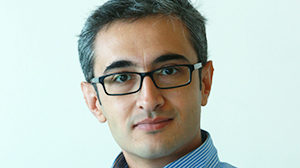“Our transportation system has long relied on fossil fuels which has had and continues to have devastating impacts on our air quality,” said Professor Masood Parvania, who heads the Utah Smart Energy Lab– one of our technical partners. “The goal of Utah Smart Energy Lab (U-Smart) is to electrify our transportation system (cars, buses), reducing the negative impacts of fossil-fueled based transportation on the environment.”
THE SCIENCE BEHIND LIVE ELECTRIC
University of Utah Smart Energy Lab, Utah State University SELECT, and Idaho National Labs are three of our technical partners. They are working to make electrification sustainable in Utah thanks to a cost-share award made possible by the US Department of Energy and Rocky Mountain Power.
The DOE chose Utah over regions like New York City, LA, Seattle, and Denver, and that choice is thanks to the strong leaders that formed the Live Electric partnership, from Breathe Utah to Rocky Mountain Power to U-Smart. Now, the Department of Energy is watching what Utah does with the cost-share award to see what works, and our technical partners are researching what to do next.
Utah State University SELECT (Sustainable Electrified Transportation Center) is planning where to put in chargers on the corridor. They’re layering traffic pattern data with data about where the existing electrical grid can handle chargers, then layering consumer behavior data– in other words, where is someone willing to wait half an hour while their EV charges. This data will help in deciding where to put new chargers.
University of Utah’s Smart Energy Lab, headed by Professor Parvania and comprised of scientists like PhD student Alejandro (Alex) Palomino, are the ones researching and testing how to integrate new technologies with the existing grid as well as how to get ahead of potential issues. Parvania’s hope for Utah is chargers in every workplace, every public parking lot, and every 50 miles along major corridors, and his team is figuring out how to do that.
In many places, the grid can handle today’s EV charging, but fast charging will get faster in the future– think 5 minutes to charge your car instead of 30– and the grid will need to adapt. “As we adopt plug-in electric vehicles, the PEV charging load is added as a new load to the power systems,” Parvania explained. “Our goal at U-Smart is to make sure we operate the power system such that it provides the electricity required to charge the cars, whenever and wherever it is needed.”
The last piece of the puzzle is Idaho National Labs. INL takes data collected from chargers all over the state and puts it into a usable form so that other organizations– like the DOE– can figure out what works and where EV needs are.
Thanks to these partners, Utah is the perfect testing ground for EV infrastructure technology. You can read more about their work at the links below:
USU Select: http://select.usu.edu/
University of Utah Smart Energy Lab: https://usmart.ece.utah.edu/
Idaho National Labs: https://www.inl.gov/
